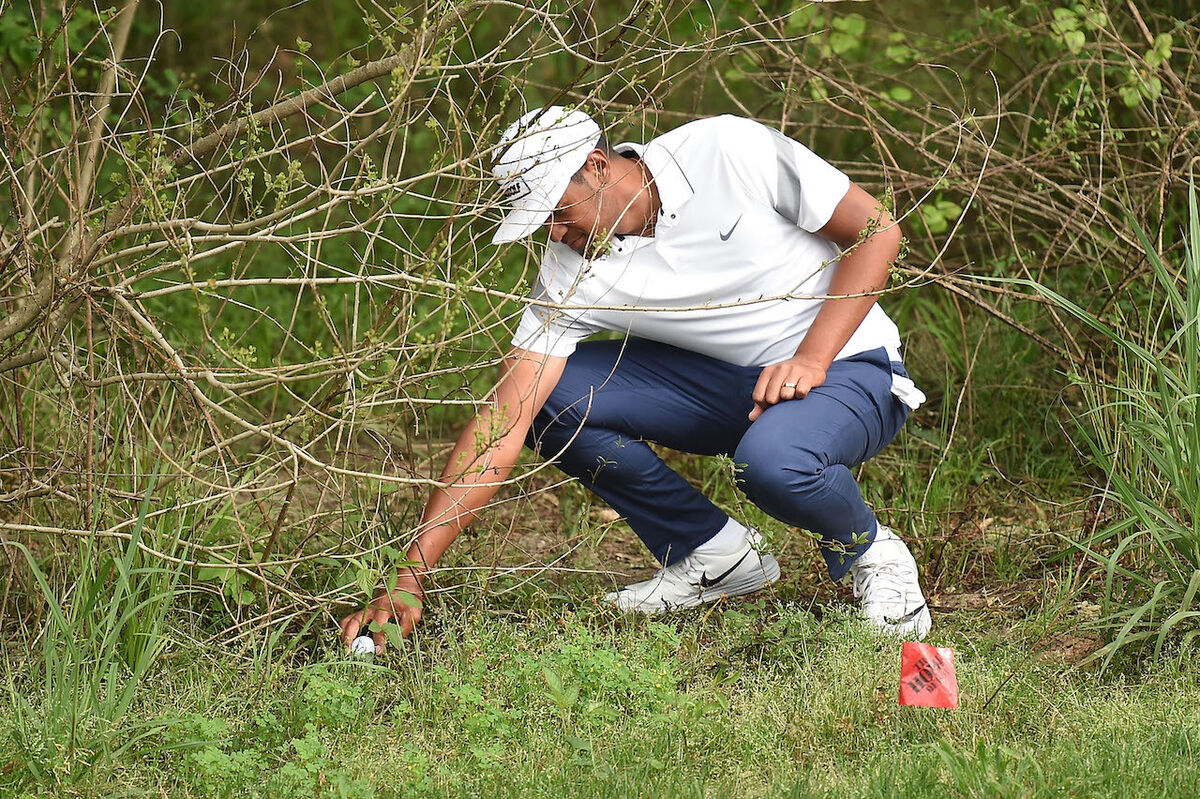Golf's Unplayable Ball Rule and Relief Options Explained

Quite possibly the most frustrating situation in golf is being in a bad position after you’ve made a good shot. Maybe you just striped your driver off the tee, but you noticed it took a funny hop once it hit the fairway. You get to your ball and realize it’s under a bush. You have no choice but to declare the ball unplayable. Now what? Here are the rules, and your options, when it comes to an unplayable lie according to the USGA Rules of Golf.
What is an Unplayable Ball?
An unplayable ball, also known as an unplayable lie, comes into play when you don’t think you can play your ball from its current position. The USGA also notes that it comes into play when you don’t want to play your shot, as well.
This can happen when your ball is resting up against a tree with no safe swing path to advance the ball, when your ball is on top of roots, in a bush, or a multitude of other similar situations.
You can take relief for an unplayable ball anywhere on the golf course, except in penalty areas, and only the golfer whose ball is in question can decide if it is unplayable. Playing partners can not make that determination, but the player should make their determination known to the rest of the group whenever taking relief from an unplayable lie.
Unplayable Lie Procedures
Once you have determined your ball is unplayable, you have three options, all of which cost you a one-stroke penalty.
Lateral Relief
If you determine your ball is unplayable, your first option should be lateral relief. Utilizing this procedure will salvage more yardage than either of your other options, but depending on what is causing your ball to be unplayable in the first place, lateral relief might not be an option.
Lateral relief procedures allow you to drop anywhere within two club-lengths of where the unplayable ball currently sits, no closer to the hole. If you have a clear shot within two club-lengths of where your ball sits, take it.
Back-on-the-Line-Relief
Your next best option is back-on-the-line relief. Draw an imaginary line from the hole through your ball and drop anywhere on that line, no closer to the hole.
Stroke-and-Distance
Your final option for relief from an unplayable ball is stroke and distance, and this should be avoided if at all possible. Under the penalty of stroke and distance, you can go back to where you hit the previous shot and play from that spot again.
Unplayable Bunker Shots
Up until 2019, you only had one choice when taking an unplayable ball in a bunker. Since then, the USGA has altered the Rules, and now, you have two options.
Staying in the Bunker
For the price of one stroke, you have the choice of dropping for a better lie within the bunker the ball is already in. The drop cannot be closer to the hole.
Outside of the Bunker
Since the latest update to the Rules of Golf, you now have the option to drop your ball outside of a bunker. Your drop cannot be closer to the hole than your unplayable ball. While this option may seem better than the first, it will cost you two penalty strokes to go this route, instead of one.
Strategy
It’s important to consider all options when determining an unplayable ball, especially since this isn’t something that your playing partners can call for you. Ask yourself, is the penalty stroke(s) worth it? Consider what your most likely score will be in each scenario, or what your worst possible score would be in each scenario, and use that to guide your decision.
If you’re able to advance the ball from where it lies, perhaps that is better than a drop.
Is this going to hurt? Not your score, but physically, is there a chance of getting injured? Taking the penalty should be your decision if there’s any chance of you getting hurt.